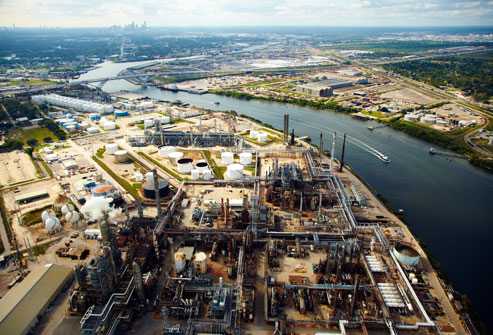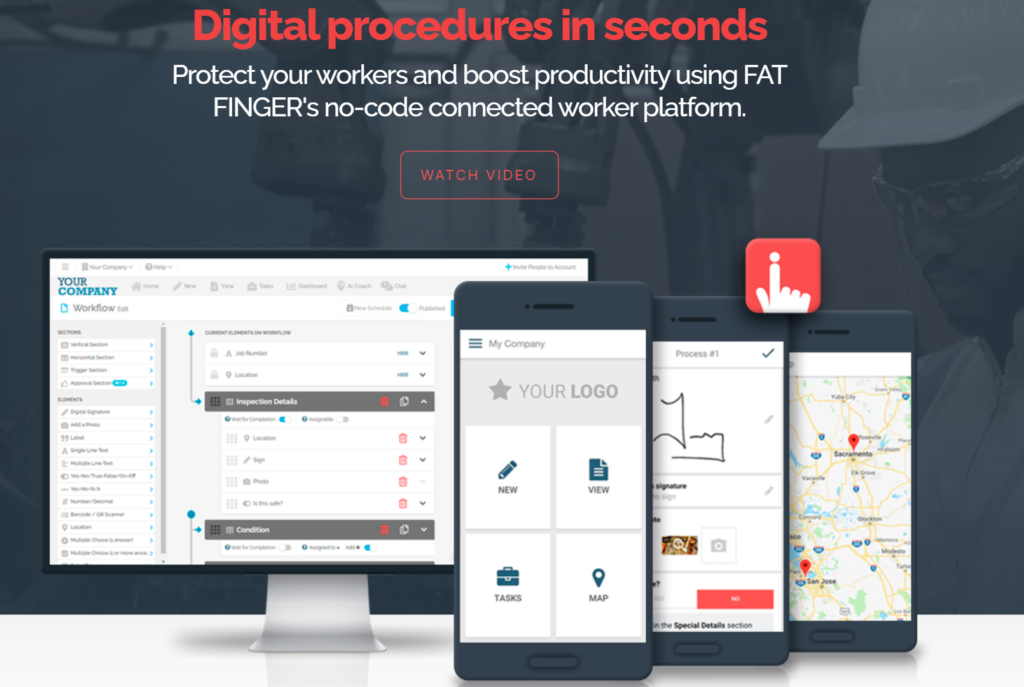The oil and gas industry is a complex and multifaceted sector that requires a deep understanding of various processes and terminologies. One such term that often comes up is CPF, or Central Processing Facility. Understanding CPF is crucial for anyone involved in the oil and gas industry, as it plays a pivotal role in the production and processing of hydrocarbons.
In this article, we will delve into what CPF is, its importance, and how digital workflows like FAT FINGER can enhance its efficiency and safety. Request a demo to see how FAT FINGER can revolutionize your CPF operations.
Understanding CPF: Central Processing Facility
A Central Processing Facility (CPF) is a critical infrastructure in the oil and gas industry. It is where the initial processing of crude oil and natural gas takes place. The primary function of a CPF is to separate the extracted hydrocarbons into oil, gas, and water, making them ready for further processing or transportation.

Components of a CPF
A typical CPF consists of several key components:
- Separation Units: These units separate the oil, gas, and water from the extracted hydrocarbons.
- Compression Units: These units compress the gas to make it suitable for transportation.
- Dehydration Units: These units remove water from the gas to prevent pipeline corrosion.
- Storage Tanks: These tanks store the processed oil and gas before they are transported.
The Importance of CPF in Oil and Gas
The CPF is the heart of any oil and gas operation. It ensures that the extracted hydrocarbons are processed efficiently and safely. Without a well-functioning CPF, the entire production process can come to a halt, leading to significant financial losses and safety risks.
Efficiency and Safety
Efficiency and safety are paramount in CPF operations. Any malfunction or inefficiency can lead to catastrophic consequences, including environmental damage and loss of life. Therefore, it is essential to have robust systems and processes in place to ensure the smooth operation of the CPF.
Challenges in CPF Operations
Operating a CPF comes with its own set of challenges. These challenges can range from equipment malfunctions to human errors. Addressing these challenges is crucial for maintaining the efficiency and safety of the CPF.
Common Challenges
- Equipment Malfunctions: Equipment failures can lead to production downtime and safety risks.
- Human Errors: Mistakes made by personnel can result in accidents and inefficiencies.
- Regulatory Compliance: Ensuring compliance with industry regulations is a constant challenge.
- Environmental Concerns: Managing the environmental impact of CPF operations is critical.
How FAT FINGER Can Enhance CPF Operations

Given the challenges associated with CPF operations, it is essential to have a reliable solution that can streamline processes and enhance safety. FAT FINGER offers digital workflows that can address these challenges effectively. Let’s explore how FAT FINGER’s six powerful safety checklists can revolutionize CPF operations.
1. Take 5 Safety
The Take 5 Safety checklist is designed to encourage workers to take five minutes to assess potential hazards before starting any task. This proactive approach can significantly reduce the risk of accidents and improve overall safety in CPF operations.
2. Near Miss Reporting
Near Miss Reporting is crucial for identifying potential hazards before they result in accidents. FAT FINGER’s Near Miss Reporting checklist allows workers to report near misses easily, enabling quick corrective actions and preventing future incidents.
3. Job Hazard Analysis
Job Hazard Analysis (JHA) involves identifying and mitigating risks associated with specific tasks. FAT FINGER’s JHA checklist provides a structured approach to assess and manage risks, ensuring that all potential hazards are addressed before work begins.
4. Risk Assessment
Risk Assessment is a critical component of CPF operations. FAT FINGER’s Risk Assessment checklist helps in evaluating the risks associated with various activities and implementing appropriate control measures to mitigate those risks.
5. Incident Reporting in the Workplace
Incident Reporting is essential for documenting and analyzing accidents and incidents. FAT FINGER’s Incident Reporting checklist ensures that all incidents are reported promptly and accurately, facilitating thorough investigations and preventive measures.
6. Journey Report
The Journey Report checklist is designed to ensure the safety of personnel during transportation. It includes checks for vehicle condition, route planning, and emergency preparedness, reducing the risk of accidents during transit.

Case Studies: FAT FINGER in Action
Several companies have successfully implemented FAT FINGER’s digital workflows to enhance their CPF operations. For instance, a leading oil and gas company reported a 30% reduction in safety incidents after adopting FAT FINGER’s safety checklists. Another company saw a 25% increase in operational efficiency, thanks to the streamlined processes provided by FAT FINGER.
Statistics Supporting Digital Workflows
According to a study by the International Association of Oil & Gas Producers (IOGP), companies that implemented digital workflows saw a 40% reduction in operational downtime and a 35% improvement in safety performance. These statistics highlight the significant benefits of adopting digital solutions like FAT FINGER in CPF operations.
Conclusion
In conclusion, a Central Processing Facility (CPF) is a vital component of the oil and gas industry, responsible for the initial processing of hydrocarbons. Ensuring the efficiency and safety of CPF operations is crucial for the success of any oil and gas project. FAT FINGER offers powerful digital workflows that can address the challenges associated with CPF operations, enhancing both efficiency and safety. By implementing FAT FINGER’s safety checklists, companies can significantly reduce risks, improve compliance, and boost operational efficiency. Create a safety workflow for free on FAT FINGER or request a demo to see how FAT FINGER can transform your CPF operations.

